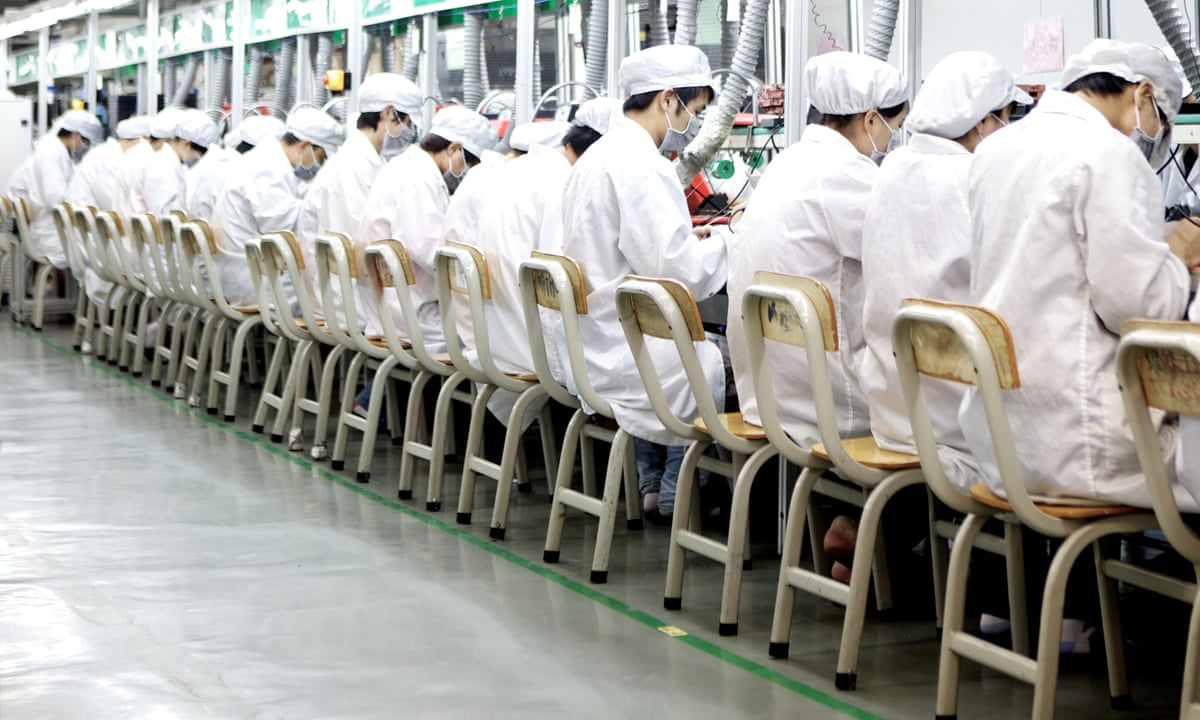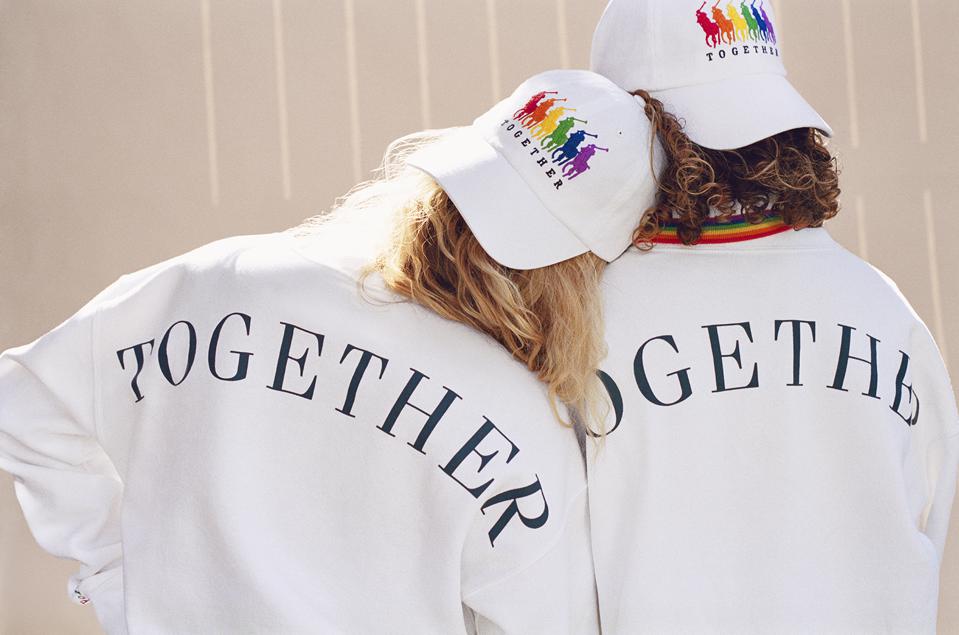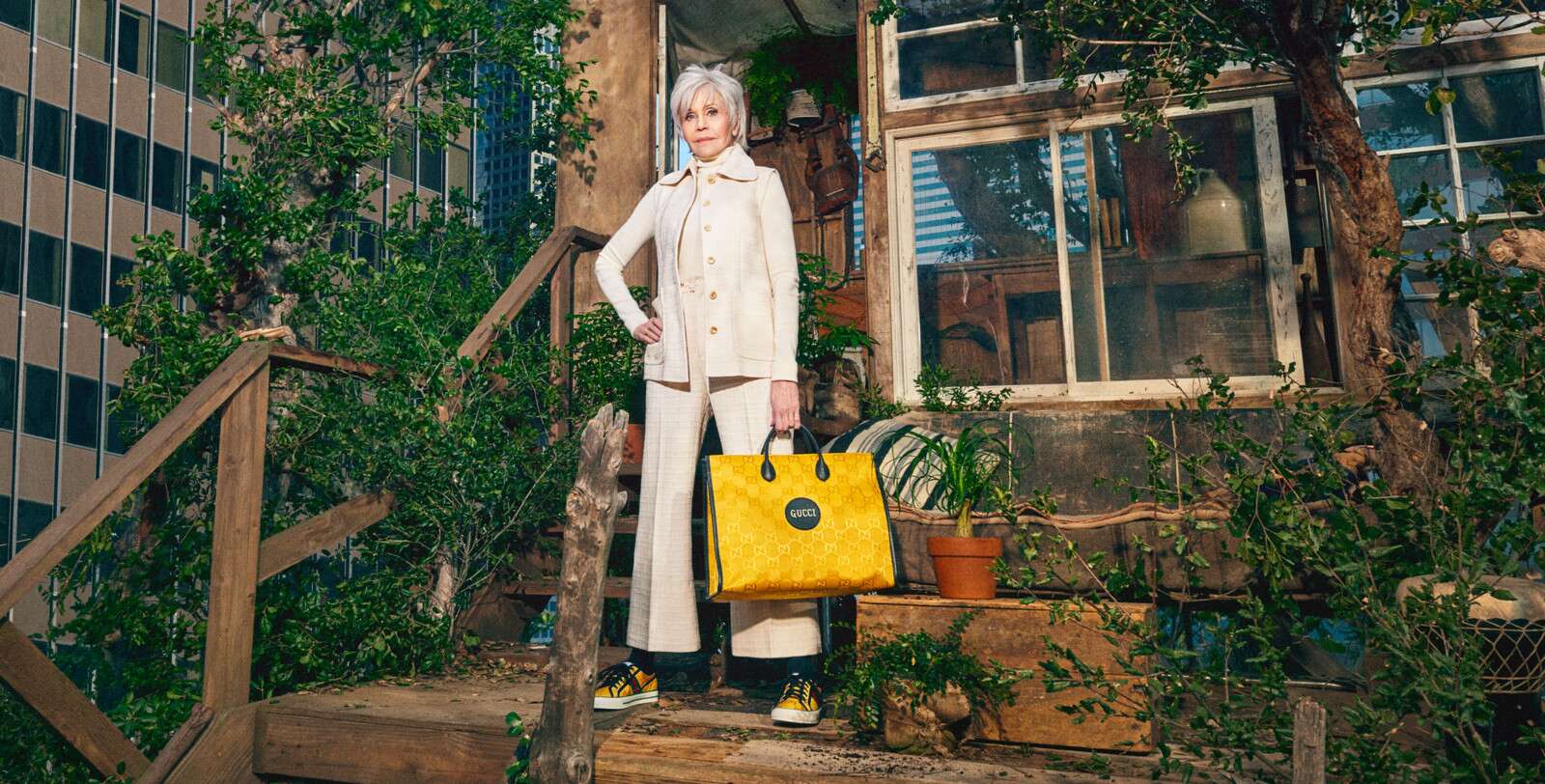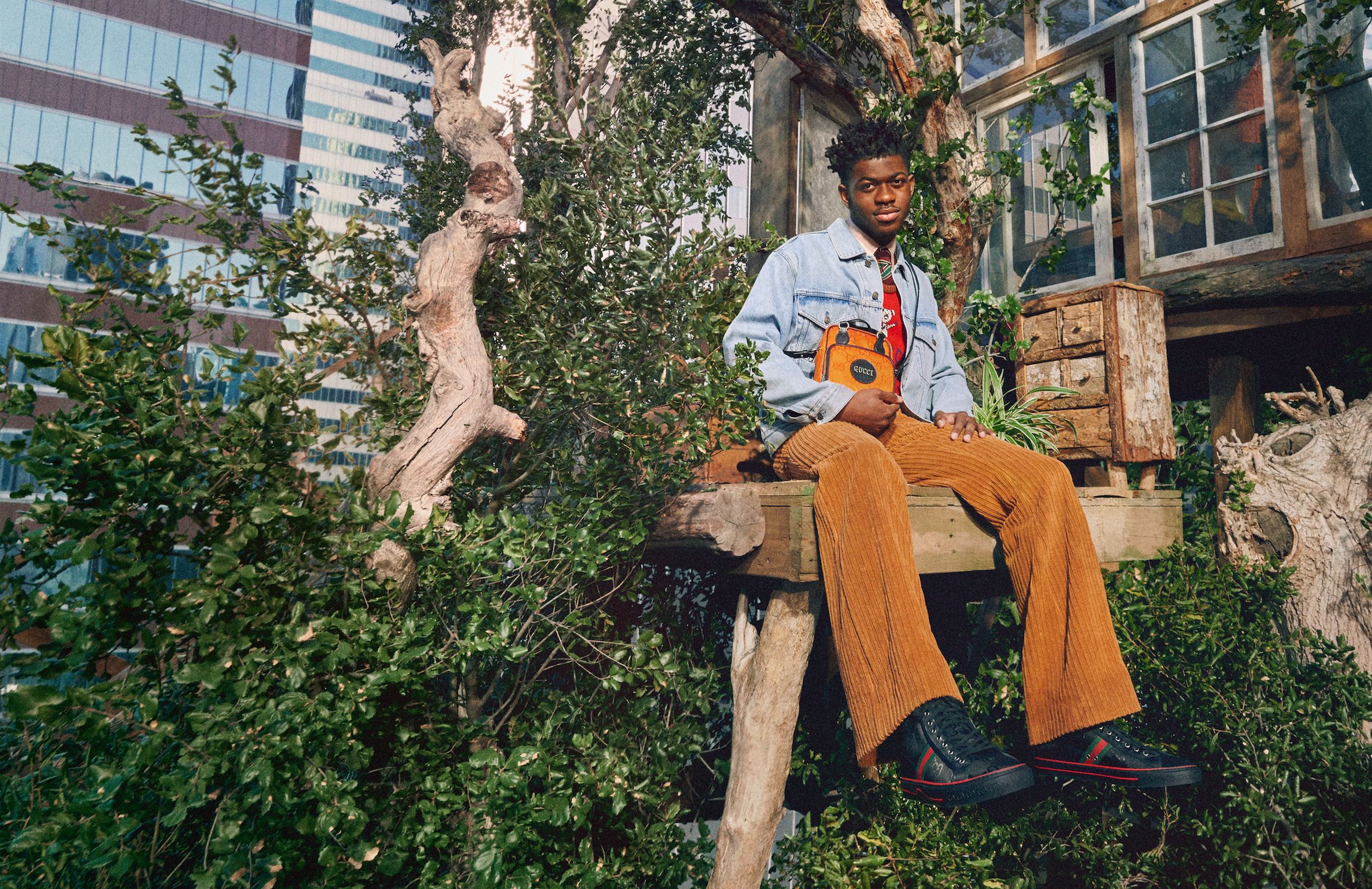“Equilibrium is a state of rest or balance due to the equal action of opposing forces. Equal balance between any powers, influences, etc.; equality of effect. mental or emotional balance; equanimity.”

Gucci have taken the initiative on embracing diversity and sustainability in the fashion world – and everyone is noticing.
With the hiring of Renée Tirado as their Global Head of Diversity, Equity, and Inclusion, as well as the renowned Bethann Hardison as a diversity consultant, the mega-brand have proven their commitment to diversity and equity within their ranks is more than an empty platitude.
And if there was ever a time to acknowledge the need for change, it’s now. The deadly pandemic rages on. Racial tensions haven’t been this high in decades. The climate is under extreme duress.
A tragic flaw of humanity is that hindsight is a far more powerful force for change than foresight. But one thing we have gotten very, very good at is bouncing back. Many great periods of strife in history have been followed by a great flourishing of culture and progress. The Renaissance in Europe came off the back of the Black Plague, arguably the worst pandemic in human history. Pivotal to these periods of revival is an awareness of the failures of the old system, and working to rectify them to make the world a better place to live.
Leaving aside great plagues, wars and other calamities, one could argue that decades of cultural luminosity cycle through every 30 years. Take the Jazz Age of the 20/30s, then 30 years later the Swinging Sixties, 30 years after that the great flourishing of the 1990s. After the disaster of leadership and mismanagement that was 2020, many indicators are now pointing to 2021 and beyond that may well be another watershed decade of change and light. This could be the era when diversity and racial justice finally changes in the businesses of fashion, retail, media and modelling.
Historically, recessions have acted as capitalism’s sorting mechanism. Weak businesses shrink or fail, while stronger ones expand. But in 2020 the process of creative destruction did not take place in the typical manner. Because the downturn was the result of a pandemic rather than, say, a financial crash or inflation scare, there were some idiosyncratic corporate winners and losers: think of the boom in video streaming, or cruise-liner firms being wrecked.

On top of the enormous economic damages of the COVID-19 downturn, the West watched in horror as America began to tear itself apart, first with riots following police crackdowns on peaceful protests in the latest wave of the civil rights movement, followed by President Trump’s violent insurrection that attempted to overturn the election. And all of this, of course, was underscored by an omnipresent climate crisis. In short, 2020/21 was anything but your standard recession.
Meanwhile vast state handouts propped up companies around the world, masking the scale of the corporate carnage. In 2021 the toll will become clearer as stimulus tapers down and more firms fail. Healthy businesses will ramp up investment, giving them an enduring advantage. These top dogs will, however, face a dramatically changed world in which the smartest ones have used the crisis to look inward and take stock of what their organisation has long needed to change, and then implement decisive change so as to prepare them for a vastly changed world.
As businesses control a larger and larger part of our lives, so too are consumers beginning to expect better. What the reaction to 2020 has triggered is greater that the long overdue permanent change on Black rights in America, as it seems to be spreading.
What started as a renewal of the Civil Rights Movement in America is expanding to a global movement with global players. No longer just lone activists and racial equality groups, it’s now young people, corporations, governments and citizens combined.
And the focus is no longer on just racial justice. It has taken on existing calls for environmental justice, responsible business practices and overall human rights.
The voices are loud and getting louder. They are demanding systemic change across the board.
Out of this carnage of 2020/21 the most visionary corporations are making wholesale changes to their corporate mission and purpose. A purpose that is no longer just a blind drive for profit growth. Smart companies are embracing “Equilibrium”.
As Gucci CEO Marco Bizzarri said, “Gucci Equilibrium unifies the principles we uphold and the actions we pursue to treat our world and each other better, for our collective future.”
After the “hot mess” that was 2020 there seems to be a new wind blowing. Can you feel it?
The Age of Accountability

Clearly, people care about businesses doing the right thing.
Modern history has been defined (in part) by the push and pull of businesses lowering costs and improving productivity, and governments attempting to regulate them to ensure the quality of life of employees, small business owners and, more recently, the ongoing biodiversity of our planet.
For as long as we have had employers and employees, businesses, be it ancient oligarchs, feudal guilds, or contemporary CEOs, the problem of wages has always been at the forefront. The cheapest way to run a business is to not pay your employees at all, something the Egyptians figured out millennia before the Greeks were harping on about democracy, liberty and ethics. Slavery persisted as an institution in various forms for thousands of years – and remains a highly efficient means of creating value while minimising costs. Thankfully, slavery has been largely eradicated, although studies show that there are still several million people living as slaves in the modern world. And in the aftermath of the US Civil War, the Industrial Revolution and the urbanisation and mechanisation of our culture, workers became more powerful than ever. Fuelled by the successes of union movements, workers in the West demanded higher pay and better working conditions.
Of course, with the advent of globalisation, that no longer mattered. Such regulations didn’t exist in China, or India, or South Korea, all countries that had been thoroughly colonised and crippled by Western countries in decades and centuries prior. And so, the game continues – workers are chronically underpaid, and Western elites reap the profits.
This is all a function of the notion that businesses are amoral entities – that their only obligation is to create value for their shareholders. Minimising costs and increasing productivity and quality are their only concerns. With that in mind, it makes sense that businesses like Microsoft and Apple would buy parts from a factory in China that installed “suicide nets” to prevent employees taking their own lives at work. It makes sense that lingerie brand Victoria’s Secret uses prison labour to manufacture its luxury goods. So the logic goes, businesses should be expected to pursue these cost-effective measures, despite their disastrous ethical consequences. The onus falls on the consumers of these products to demand a change in attitude.
Governments are, of course, able to enforce regulations on businesses, and are usually very effective at influencing the ethics and proper conduct of businesses within their own countries. It becomes far harder to manage, however, when these companies become global entities. If the “suicide factory” was in Australia, and Microsoft was an Australian company, this author has little doubt that both would be held immediately accountable, and immediate change would be forced. But when it comes to Australian consumers buying products from an American company that manufactures its products in China, and buys parts from the “suicide factory”, the way forward becomes very complex indeed.
It’s safe to say, then, that the nature of business is to sail close to the wind, as it’s in their nature. Consumers, governments and philanthropists are responsible for forcing change.
But what if accepting that responsibility and accountability became a necessity? What if it was no longer possible to ‘get away with it’?
Apocalypse

The Greek word “Apocalypse” translates to “an uncovering”. Few words are more fitting for the experience of the 21st century. For young people, all they have known is confusion, rapid change and calamity – be it 9/11, endless war in the Middle East, the GFC, the rise of white supremacy and toxic politics in the Trump era, the looming existential threat of climate change and now the global COVID-19 pandemic. And as young people, raised in the heady soup of this apocalypse, became older and more vocal, change became not just a fashionable trend, but a vital facet of doing business in the modern era. It has primarily been the work of young activists that has captured the attention of the globe. Greta Thunberg’s climate activism led to international student strikes, calling for action on fossil fuels and pollution. The Black Lives Matter movement, as well as the 15% pledge, were started by Millennials. Closer to home, young Indigenous rights activist Taylah Gray drew the attention of the nation for her victory in the Supreme Court and subsequent leading of a protest in Newcastle in 2020. Abroad, many young people called for socialism in various forms, championed by US Senator Bernie Sanders in his two presidential campaigns which, while unsuccessful, pushed the Democratic Party’s agenda further to the left.
Faced with this situation, it has become increasingly clear that companies must pay attention to this, or risk falling behind and losing an increasingly political consumer base.
Confronting the ‘isms’, and embracing the ‘itys’, has become a major focal point for discussion in contemporary culture. It is no longer enough for a business to just produce products for consumers. Like it or not, there has never been scrutiny like this before.
A prevailing success of identity politics is to bring to the forefront the concept of privilege, and to examine its role in prioritising the well-being of some groups over others. Second-wave feminism’s successes throughout the latter half of the 20th century saw great progress in empowering women in workplaces. Subsequent movements, and a flourishing of acceptance for members of the LGBTQ+ community, culturally and in legislation, have truly opened the door for other voices and types of people to be considered for positions of power. While the power of ‘stale, pale and male’ remains omnipresent, the foundations of it are being shaken. We’re seeing it in the arts. We’re seeing it in government. We are experiencing a cultural moment where other voices are finally being heard.
The Sins of the Past, and Their Reckoning

The business of fashion has historically and contemporaneously prioritised privileged and white voices; it has consistently kept Black creatives out of top positions, while simultaneously profiting off Black culture. This goes back as far as you are willing to look – luxury garments made in the United States used cotton picked by African slaves until as late as the Civil War. The instances of cultural appropriation from even the last five years are too many to list in full. A 15% share of retail shelves for black owned businesses is just the start of what is owed. Model agencies, magazine publishers, casting directors, creatives, talent agents, fashion brands, creatives, Hollywood studios, streaming Networks, media companies, content creators, and consumers are all part of this eco-system that needs to be held to account so they too ensure and encourage a 15% share to people of colour, and play their part in this racial justice reckoning to affect a lasting and equitable Renaissance. Black people of talent must be given their opportunity and anything less than 15% of the seats at the table is unacceptable.
Fashion is one of the world’s most important industries, driving a significant part of the global economy. In 2021, the industry is projected to reach a staggering $3 trillion in total value. 2% of the world’s Global GDP. If it were ranked alongside individual countries’ GDP, the global fashion industry would represent the world’s seventh largest economy.
And yet, for some observers, fashion is still regarded as simultaneously frivolous and indulgent; and many of the sources of information about the industry are fragmented, incomplete, or unreliable.
What is not in dispute is that the industry’s history has been abysmally lacking in equal opportunity for minorities, and the woeful exploitation of production workers in sweat shops and in third world countries, and the enormous environmental damage and pollution due to the textile industry’s production processes and management. There are few industries that need pay attention more than the fashion industry. While in some ways the fashion industry was leaps and bounds ahead with their championing of non-white models and agents like Tyson Beckford, Naomi Campbell and Bethann Hardison through the latter half of the 20th century, they are also among the guiltiest on matters behind the camera.
For example:

Environmentally, the production and preparation of fabrics and other textiles is highly destructive. The fashion industry has been rated as the second biggest global polluter after the petrochemical industry. Enormous amounts of water are required to grow cotton, but more often than not it is grown in unsuitable environments. As well as this, two hundred tons of water are required to dye just one ton of fabric. Excess runoff from factories often ends up in rivers, where these pollutants find their way into the water supply in countries like India. A previous reliance on air shipping is also a major pollutant, with the only advantage over sea freight being the reduced wait time for materials.
Production also relies on the growing, maintenance and disposal of millions of animals, which are often not suited for their environment. Sheep, not at all optimised for Australia, are exposed to ‘mulesing’ as a means of avoiding being flystruck. When animals like these are exported live, they are subject to terrible conditions; the live export industry has been subject to decades of criticism and investigations. More generally, the breeding of animals for textile purposes uses a huge amount of land and resources, and is a big polluter in its own right. Furthermore, the (thankfully now largely banned) trade of exotic furs and animal skins has led to mass extinctions or endangerment of rare animals all over the world, throwing off the balance of vulnerable ecosystems.
Not just animals are exploited, however. The fashion industry also has a dreadful record of human rights violations. The term ‘sweatshop’ is most readily associated with the manufacturing of clothes in Asia or the subcontinent, and for good reason. Even products boasting the coveted ‘Made in Italy’ label are still mired in unethical practices – many reports out of Prato, Tuscany reveal poor working conditions, reliance on illegal immigrants working 14-hour shifts for below the minimum wage, and bribery of local officials. This demeaning work disproportionately affects women of colour. Workers are routinely underpaid, overworked and underappreciated, especially given that what they are making are high value items, with prices marked up tens or hundreds of times their production cost.
And even among the consumer base there are toxic ideas at work. The emphasis on hyper-consumption and ‘fast fashion’ leads to millions of serviceable garments being thrown out every year, with companies generally encouraging buying this season’s outfits instead of keeping or repairing existing clothing. Encouraging the following of these trends, especially among luxury brands, also accentuates class divides, separating the uber-wealthy from less well-off consumers. Finally, normative beauty standards pushed by the fashion industry, particularly for women, can have a crushingly negative impact on adolescents’ self-esteem, breeding eating disorders and other unhealthy responses in an attempt to resemble the supermodels on Instagram.
The fashion industry has also been under scrutiny for much longer than many others. Perhaps it’s the ubiquity of the ‘Made in China’ logo, or the origins of the sweatshop. Consumers have been aware of these bad practices for decades, and the industry was seen as a pariah for just as long.
But with an increasingly socially conscious consumer base, and in the face of the aforementioned crises at hand, the industry is beginning to take notice. Many of the leading fashion giants are now also turning to clean their houses of the other major issues, so as to operate in a way that can sustain a healthy future for our species and our planet. Leaders are now implementing sweeping change, and implementing practices to not only correct some of their past sins, but are going even further to implement a new values-based operating system.
Good For the World is Good For Business
A McKinsey study showed, fairly conclusively, that companies that have more diverse executive suites and management perform better than ones that don’t – often quite substantially so. The reasons for this are myriad. A less homogenous workforce is better equipped to effectively communicate with a wider market, more capable of handling problems with nuance, and can draw on a deeper pool of cultural wisdom to inform its decisions. Diversity is strength. Allowing everyone, not just white men, to have a say over how things are done leads to a more democratic, fair society – and if our culture continues to be dominated by businesses, the least we can do is try and make those businesses representative of the cultures they emerge from.
But also, appealing to a rapidly-growing “woke” market has proved wildly successful. It seems obvious in retrospect – if everyone buys things, and people value seeing themselves represented, why not appeal to everyone?
Initiatives

Kering, the parent company of several brands including Gucci, Yves Saint-Laurent and Balenciaga, has been ahead of the curve for a fair while. The Kering Foundation, established in the early 2000s, has supported a host of philanthropic endeavours, many of which are focused on violence against women and issues in developing countries. While the exact figures of their donations are unpublished, there are a large number of initiatives that have hugely positive impacts. These include working with local governments and NGOs around the world, as well as three economic grants a year to small businesses focusing on women, families and women’s issues, aimed at stimulating the enterprises and entrepreneurs of tomorrow.
Gucci too has had a long-standing focus on sustainability. The Equilibrium program was launched in 2018. Many initiatives such as their Green Packaging aim to reduce, recycle or repurpose waste. And as a part of Kering since 1999, they remain in lockstep with Kering’s philanthropic goals.
Other companies like LVMH have made similar commitments. LVMH created the Inclusion Index in March 2018 to recognize Diversity and Inclusion initiatives throughout the Group. Sharing D&I initiatives among LVMH Maisons stimulates them to go even further. Nike have been transparent with their statistics on diversity within their upper management, and while there is a long way to go, definite progress has been made. Other initiatives like the 30% Club and the 15% Pledge have had many major companies sign on, committing to gender and racial equity within their ranks.
Whether idealistically or pragmatically, Gucci, and many similar companies like Ralph Lauren, have realised the importance of real action. The wider concern of sustainability and philanthropy as ‘life or death’ is at the forefront of discussion. The current climate is one of desperate innovation – to fully embrace these goals requires the shedding of many of the fundamentals of the industry itself, as discussed earlier. The leadership of the fashion world is facing an existential threat: how will it respond?
Gucci and Ralph Lauren – A Good Start?

After the disastrous backlash from their balaclava range, which to many evoked blackface or the ‘gollywog’ caricature, Gucci released a multi-stage plan to combat inequality in the company. The twin thrusts of global outrage at the murder of George Floyd, Breonna Taylor and so many other African-Americans, coupled with their own lagging public perception, were enough to prompt swift and significant changes. Taking on Bethann Hardison is a clear demonstration of their commitment to these updated ideals.
Hardison has a long history of exactly what Gucci seem to be looking for. Making a splash as one of ten African-American models to walk at the Battle of Versailles in 1973, she paved the way for generations of models of colour to come. She has a history of championing African American models, particularly Tyson Beckford. And she is well aware of the importance of symbolic gestures – in an open letter to the councils of the five major fashion cities, she stated that pleading ignorance is not enough: “no matter the intent, the result is racism”. Hardison is a sincere figure for change, and shows Gucci are serious about diversity.
She is also a close friend of Ralph Lauren, who has shown a similar commitment to her ideals.
The companies have made statements and commitments to diversity and sustainability in the last few years that have sent ripples through the fashion world, and the corporate sphere more generally. On the subject of ‘people’, Gucci makes four promises:
- Promoting diversity and gender parity;
- Supporting the continuation of craftsmanship traditions;
- Offering our teams a sustainable and caring working environment;
- Contributing to positive social impacts and supporting transformation across the entire supply chain
Ralph Lauren made the following statement on the subject in an email to Vogue:
“This is not about a strategy, it’s about a way of living. After more than 50 years, this is not a moment to reflect on what we have done in the past, but to deepen our commitment, to reconnect and live our values, to listen and understand different experiences and challenges and evolve through a spirit of true togetherness.”
Together, these decisions and statements weave together a radically new way we may come to see businesses in the future. Marco Bizzarri, Ralph Lauren and Bethann Hardison are not just here for the money – recognition of the role the companies they champion play in the health of the world and its people is being placed right at the forefront of the company’s very being.
Company Statements

Gucci
Ralph Lauren
The DNA of the fashion world is being rewritten. The rules are changing. And as we enter a turbulent new decade, it has become clear that businesses can either catch up, or be left behind. If we do experience a rebirth in the aftermath of COVID-19, history may come to remember the decisions of the fashion world as the harbingers of fundamental, systemic change.
Who knows – our black Mona Lisa may be just around the corner…?
Subscribe to FIB’s Weekly Alchemy Report for your weekly dose of music, fashion and pop culture news!







